10 Retail-Inspired Closet Organization Ideas for 2025

Welcome to the future of closet organization, where the line between a high-end boutique and a perfectly organized personal closet is blurring. Effective retail clothing display ideas are no longer just for store owners; they are powerful principles for anyone looking to transform their wardrobe into a curated, functional, and beautiful space. The art of display is about more than just showing off clothes—it’s about creating an experience, simplifying choices, and maximizing every inch of your closet.
Whether you're a fashion enthusiast aiming to conquer closet chaos or a homeowner seeking a more streamlined daily routine, the strategies we're about to explore offer universal benefits. This guide will delve into ten expert-backed techniques borrowed from retail that elevate clothing presentation, turning cluttered racks into inspiring personal collections.
By borrowing from the best in professional design, you'll discover how to implement these concepts at any scale. We will explore practical methods for creating focal points, building cohesive outfits, and using color theory to your advantage. You'll learn how to achieve a polished, organized look that makes getting dressed a daily delight, proving that exceptional presentation is achievable right in your own home.
1. Visual Merchandising with Focal Points
In retail, visual merchandising with focal points guides a customer's eye. At home, it’s a powerful technique for highlighting your favorite pieces and bringing order to your closet. This is one of the most effective retail clothing display ideas to adapt because it involves creating specific, eye-catching areas that draw attention to key items, new purchases, or your most-worn outfits. By designing a visual hierarchy in your closet, you direct your own gaze and make getting dressed a more engaging, intuitive experience.
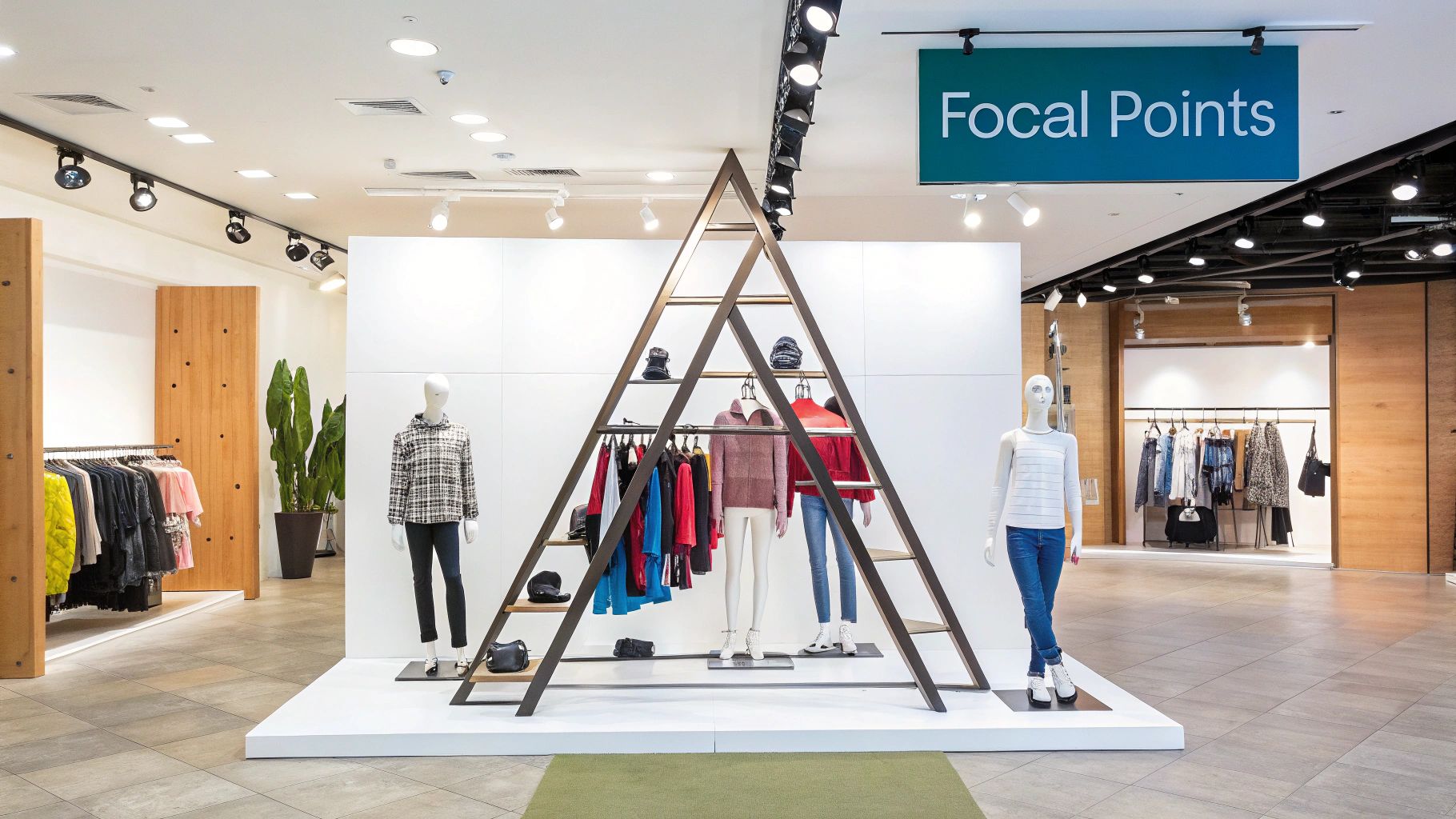
This method borrows principles from art and design, such as the "rule of thirds" or the "pyramid principle," to arrange your wardrobe. For example, a central shelf featuring a favorite handbag, flanked by folded sweaters and accessories arranged at varying heights, creates a compelling pyramid display that feels dynamic and makes your closet feel like a personal boutique.
How to Implement Focal Points in Your Closet
Creating a successful focal point is about more than just placing a pretty item front and center. It requires a thoughtful combination of elements to tell a cohesive story about your style.
- Lighting is Key: Use stick-on LED or puck lights to make your focal point approximately three times brighter than the rest of the closet. This contrast immediately draws the eye.
- Strategic Positioning: Place these displays at eye level, like on a central shelf or a dresser top inside a walk-in, to capture attention and guide your daily selection process.
- Use Odd Numbers: Groupings of three or five items (like three purses or five stacked sweaters) are more visually appealing and natural to the human eye.
- Keep it Fresh: Rotate your focal points seasonally. Highlight your best coats in winter and your favorite sundresses in summer to keep your closet feeling relevant.
2. Seasonal and Thematic Window Displays
In retail, seasonal window displays are a store’s first impression. For your closet, this concept translates into organizing your space thematically by season. This is one of the most practical retail clothing display ideas because it creates an immersive and functional system that stops you from rummaging through winter coats in July. By building visual narratives around seasons, you can evoke a sense of order and make your daily routine far more efficient.
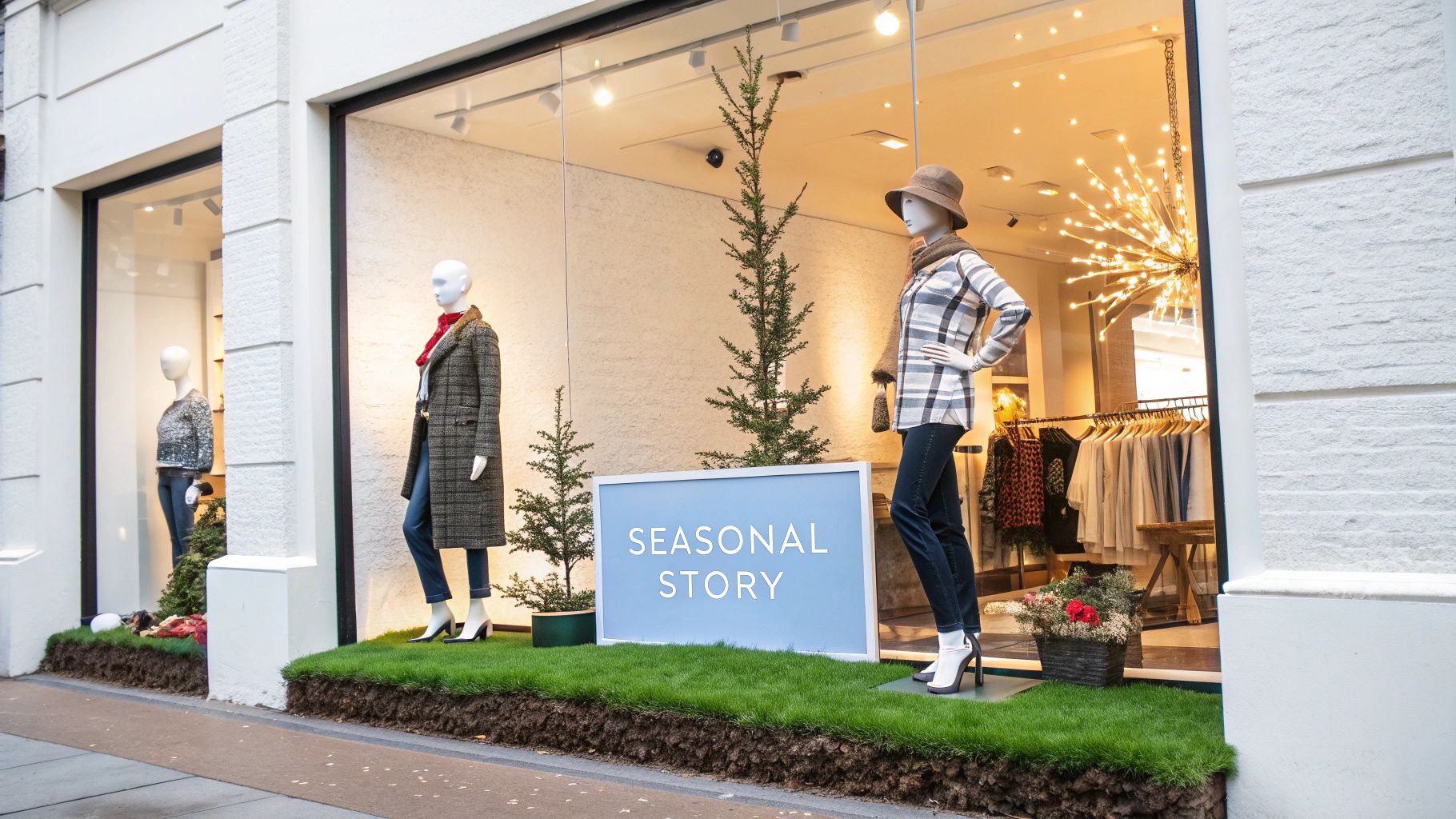
This strategy isn't just about storing off-season items; it's about curating your active wardrobe. Think of how a boutique window tells a story about "Summer Getaways" or "Cozy Autumn." You can apply the same logic to your closet, creating a space that feels like a personal collection tailored to the present moment. This approach makes getting dressed easier and helps you rediscover pieces you might have forgotten.
How to Implement Thematic Closet Organization
A successful thematic closet requires planning and a balance between accessibility and aesthetics. The key is to make your current wardrobe the hero of the space.
- Plan Ahead: Dedicate a weekend at the start of each season to your closet switch. This lead time is crucial for washing clothes, organizing storage bins, and planning your layout.
- Create a "Boutique" Section: Designate the most accessible part of your closet for the current season's items. This becomes your personal, curated "shop" for everyday dressing.
- Prioritize Visibility: While off-season items can be stored in bins or garment bags, ensure your in-season apparel is well-lit and clearly visible. The theme should enhance accessibility, not hide things away.
- Keep it Fresh: To maintain relevance, update your closet every three to four months at a minimum, aligning with the changing seasons or your lifestyle needs.
3. Cross-Merchandising and Outfit Building
Cross-merchandising in a store means showing a complete, shoppable look. At home, this is one of the most powerful retail clothing display ideas for simplifying your life. It shifts your focus from "finding a shirt" to "grabbing an outfit," saving you time and mental energy every morning. By grouping complementary items like pants, tops, and jackets, you solve the "what to wear" problem before it even begins.
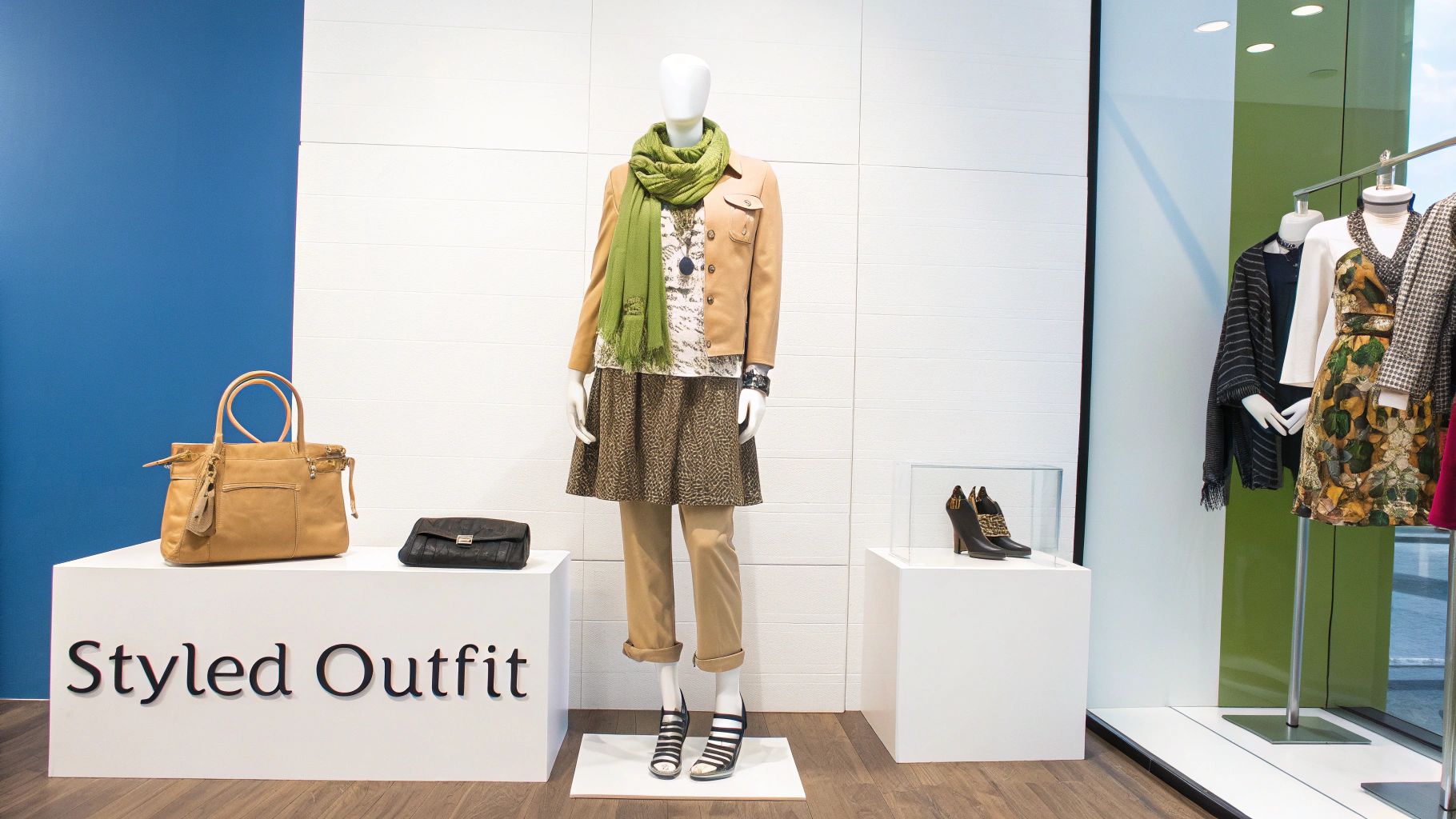
This storytelling approach helps you see the versatility of your wardrobe. Instead of just storing clothes, you are curating a collection of ready-to-go looks. This method not only inspires you to wear what you own but also demonstrates how different pieces can work together, maximizing the potential of your existing clothes for better closet organization.
How to Implement Outfit Building in Your Closet
Effective outfit building is about creating compelling, easy-to-grab style solutions that fit your lifestyle. It's about curation, not just collection.
- Create Lifestyle Zones: Dedicate sections of your closet to specific themes like "Work Outfits," "Weekend Casual," or "Date Night." This helps you quickly find a complete look for any occasion.
- Use Multi-Item Hangers: Invest in hangers that can hold an entire outfit—a shirt, pants, and even a blazer—on a single hanger to keep looks together.
- The 5-Outfit Rule: On Sunday, plan and assemble five complete outfits for the upcoming work week. Hang them in a designated, easy-to-reach spot in your closet.
- Digital Outfit Planning: Use a closet organization app to photograph your clothes and create digital outfits. This helps you visualize combinations without pulling everything out.
4. Interactive and Technology-Enhanced Displays
Integrating technology in a store creates a memorable, modern shopping experience. At home, using apps and digital tools is one of the most forward-thinking retail clothing display ideas for mastering your wardrobe. This strategy bridges the gap between your physical closet and digital planning by using apps or QR codes to manage your inventory. It transforms a passive collection of clothes into an active, personalized wardrobe you can access from anywhere.
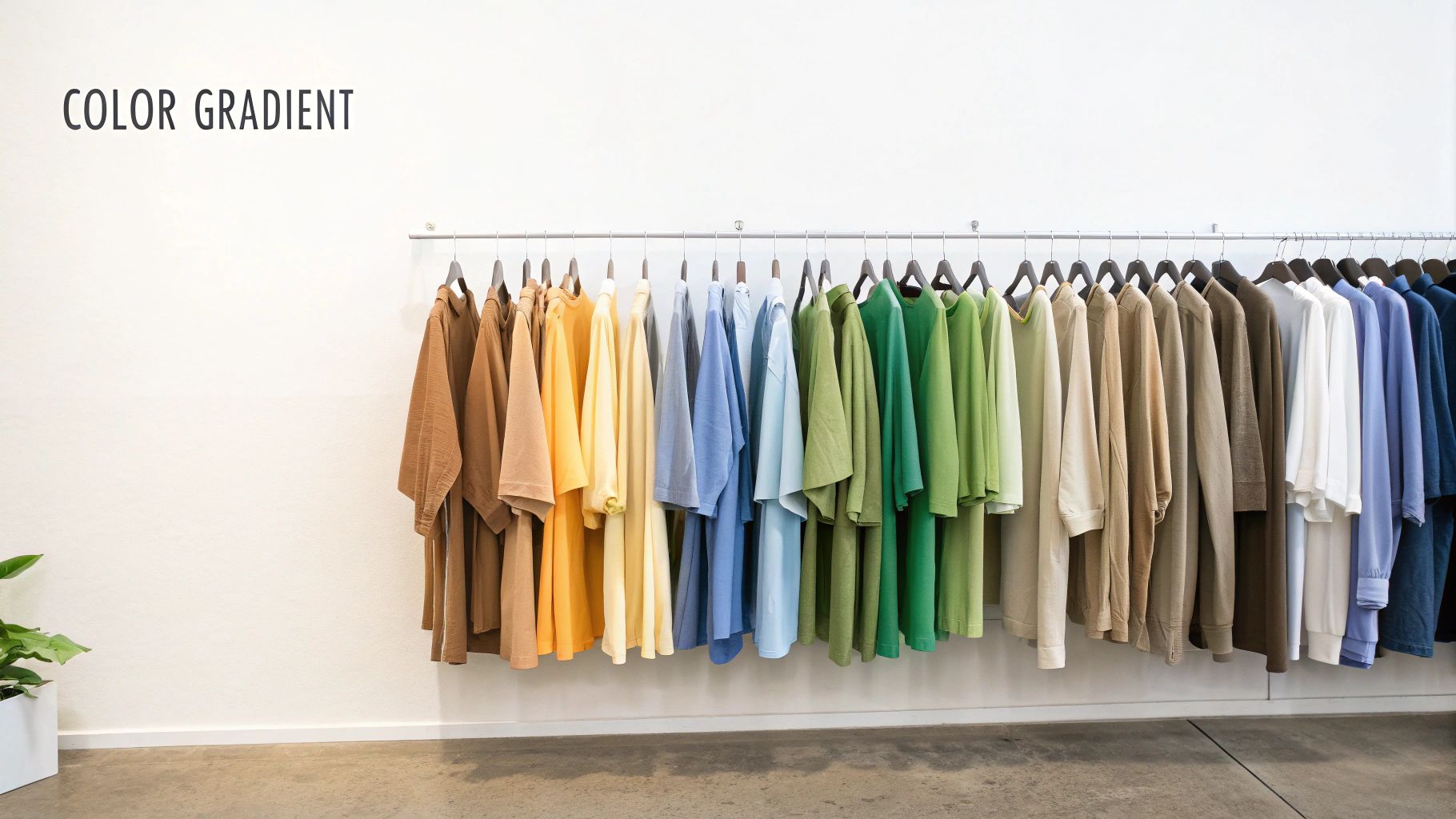
This approach enhances your physical closet with a layer of digital content. For instance, a wardrobe app can help you log every item you own, create outfits, and even track how often you wear each piece. This not only improves your daily styling but also provides valuable data on your personal style, helping you make smarter shopping decisions and identify what to declutter.
How to Implement a Digital Closet System
Bringing technology into your closet organization doesn't have to be a massive overhaul. You can start small and build a system that works for you.
- Start with an App: Download a wardrobe management app like Stylebook or Cladwell. Spend time photographing and logging your clothes to create a digital inventory.
- Use QR Codes for Storage: Place QR codes on storage bins for off-season clothes. Scan the code with your phone to see a list or photos of what's inside without having to open the box.
- Enhance, Don't Replace: Use technology to support your decision-making, not to create more work. The goal is to simplify getting dressed and decluttering.
- Plan for Maintenance: Schedule 15 minutes each month to log new purchases and remove items you've donated to keep your digital closet accurate.
5. Lifestyle and Aspirational Displays
Creating lifestyle displays in retail sells an experience, not just a product. At home, this is one of the more powerful retail clothing display ideas because it connects your wardrobe to your actual life. Instead of just hanging a jacket on a rack, you organize your closet into scenes that tell the story of your lifestyle, helping you find what you need for any activity.
This method transforms your clothes from simple objects into key components of your daily life. For example, creating a "Workout Zone" with all your activewear, sneakers, and gym bags in one place streamlines your fitness routine. A "Work From Home" section with comfy-but-professional tops makes morning prep effortless. This approach makes your closet a functional tool that supports your personal brand and aspirations.
How to Implement Lifestyle Zones in Your Closet
Building a successful lifestyle-based closet requires self-awareness and careful curation. It’s about creating an authentic system that resonates with your daily activities and enhances your closet organization goals.
- Define Your Lifestyle Categories: Identify the main activities in your life. Common categories include Work, Casual/Weekend, Activewear, and Special Occasion.
- Use Drawer Dividers and Bins: Use dividers and labeled bins to group smaller items within each lifestyle zone. For an activewear zone, this could mean separate compartments for sports bras, leggings, and socks.
- Create "Shoppable" Zones: Set up each section of your closet to feel like a mini-boutique for that activity. Use high-quality hangers, shelving, and bins to showcase how your clothing can be integrated into a tidy and stylish personal space.
- Tell a Seasonal Story: Update your lifestyle zones to reflect seasonal changes. A "Summer Weekend" zone might feature swimsuits and cover-ups, while a "Winter Weekend" zone would have cozy sweaters and beanies.
6. Color Blocking and Gradient Displays
Color blocking is one of the most visually impactful retail clothing display ideas, transforming standard clothing racks into artistic statements. In your own closet, this technique involves organizing your clothes by color families or in a seamless rainbow or gradient. The result is a stunning visual effect that is not only aesthetically pleasing but also simplifies finding exactly what you're looking for.
This method leverages color theory to create an organized, intuitive flow. By grouping items by color, you create a powerful visual rhythm that makes your closet feel curated and intentional. It’s a strategy that works equally well for a vibrant, colorful wardrobe and one filled with minimalist, neutral palettes. It's a simple change that delivers a high-end, boutique feel.
How to Implement Color Blocking in Your Closet
Creating a compelling color-blocked closet requires attention to detail to ensure the effect is cohesive rather than chaotic. It's about more than just putting similar colors together; it's about creating a visual system.
- Follow the Rainbow: A common method is to organize clothes in ROYGBIV order (Red, Orange, Yellow, Green, Blue, Indigo, Violet), followed by neutrals like brown, grey, black, and white.
- Maintain Consistent Spacing: Use slim, uniform hangers and ensure even spacing between them. This creates a clean, uncluttered look that allows each color to stand on its own.
- Separate by Item Type First: For maximum organization, first separate your clothes by type (e.g., shirts, pants, dresses) and then color-block within each category.
- Proper Lighting is Crucial: Ensure your closet has bright, neutral-toned lighting to accurately represent the true colors of the garments and make the display pop.
7. Flexible and Modular Display Systems
Flexible and modular display systems are a cornerstone of modern retail because they can evolve quickly. For home organization, this is one of the most adaptable retail clothing display ideas. This approach uses adjustable and reconfigurable components—like shelves, drawers, and hanging rods—that can be easily rearranged. This allows you to adapt your closet layout as your wardrobe changes without needing a complete renovation.
This concept prioritizes efficiency and versatility. A modular closet system means you can transform a section from double-hanging rods for shirts one season to tall, single-hanging space for dresses the next. It empowers you to create a custom closet that perfectly fits your inventory, no matter how it changes over time. The principles of modularity are key to maximizing your space, as explained in our guide on how to make a small closet bigger.
How to Implement a Modular Closet System
Building a successful modular closet is about planning for change and investing in a system that can grow with you. It requires a strategic approach to selecting your components.
- Choose an Adjustable System: Opt for closet systems with adjustable shelves and rods that can be moved without tools. This ensures you can reconfigure it easily.
- Invest in Quality: Select durable, high-quality materials that can withstand frequent adjustments. This protects your long-term investment in your home.
- Use Modular Inserts: Incorporate drawer dividers, shelf dividers, and storage boxes that can be moved and rearranged as your needs change. This adds another layer of flexibility.
- Think Vertically: A good modular system allows you to take advantage of the full height of your closet, adding shelves or rods in previously unused vertical space.
8. Sustainable and Eco-Friendly Displays
In retail, sustainable displays tell a story about a brand's environmental commitment. At home, this is one of the most resonant retail clothing display ideas for creating a mindful and healthy space. The strategy involves using non-toxic, recycled, or sustainably sourced materials for your closet organization, from hangers and bins to shelving, turning your wardrobe into a testament to your personal values.
Instead of cheap plastic bins and hangers, picture sturdy wooden hangers from responsibly managed forests, storage boxes made from recycled cardboard, or shelving made from reclaimed wood. This not only reduces your environmental footprint but also creates an authentic, calming space that eco-conscious individuals can feel good about every time they open their closet doors.
How to Implement an Eco-Friendly Closet
Integrating sustainability into your closet organization requires creativity and a commitment to sourcing materials responsibly. This approach is not just about looks; it's about authentic action.
- Choose Sustainable Hangers: Ditch flimsy plastic hangers for durable options made from FSC-certified wood, bamboo, or recycled materials. They last longer and are better for the planet.
- Use Natural Materials for Storage: Opt for storage bins and baskets made from natural, renewable materials like canvas, seagrass, or recycled paper instead of plastic.
- Embrace Energy Efficiency: Switch to 100% LED lighting in your closet. LEDs consume up to 80% less energy than traditional bulbs and last significantly longer, reducing both waste and your electricity bill.
- Declutter Mindfully: A key part of sustainability is mindful consumption. A well-organized closet helps you see what you truly own and need, preventing duplicate purchases and promoting a more sustainable wardrobe. This kind of mindful closet organization can be applied at home too; learn more about the best ways to organize clothes on moralve.com.
9. Size-Inclusive and Accessibility-Focused Displays
In retail, inclusive displays ensure everyone can shop comfortably. At home, this translates into one of the most essential retail clothing display ideas: designing your closet for universal accessibility. This approach involves thoughtfully arranging your space so that every item is easy to see and reach, regardless of your height or mobility. By moving beyond a one-size-fits-all closet design, you create a space that is truly functional for you.
This method goes beyond simple tidiness to create genuine equity in your daily routine. For example, using pull-down closet rods brings high-hanging clothes within easy reach. Clear storage boxes allow you to see contents without needing to pull down heavy bins. When combined with reachable shelving and clear pathways in a walk-in, your closet becomes a stress-free space where everything you need is readily available.
How to Implement an Accessible Closet
A truly accessible closet requires a holistic view of your daily routine. It’s about removing physical barriers and making your life easier.
- Store Items by Frequency of Use: Keep your most-worn items in the most accessible area of your closet, between eye and waist level. Store less-used items higher up or lower down.
- Ensure Clear Navigation: In a walk-in closet, maintain clear floor space to move around easily. This concept of organized, clear space is also vital for closet organization at home; learn more about how to declutter your closet on moralve.com.
- Use Adjustable and Pull-Down Fixtures: Incorporate adjustable-height shelves and pull-down rods so that all merchandise is within easy reach, even for those who are seated or have limited mobility.
- Provide Comfort and Support: If you have a walk-in closet, include a small stool or ottoman. This provides a place to sit while putting on shoes and can also be used to safely reach higher shelves.
10. Data-Driven and Analytics-Based Display Optimization
Retailers use data to decide where to place products for maximum sales. At home, this is one of the more advanced retail clothing display ideas, replacing guesswork with a concrete analysis of your own habits. By tracking what you actually wear, you can strategically organize your closet for maximum efficiency, placing your most-loved items in the most accessible spots.
This scientific method can be as simple as turning hangers around. At the start of a season, face all your hangers in one direction. As you wear an item, turn the hanger around. After six months, you have clear visual data on what you wore and what you didn't, making decluttering decisions logical instead of emotional. This insight allows you to optimize your closet space for the clothes you truly love and wear.
How to Implement a Data-Driven Closet System
Implementing an analytics-based strategy involves collecting data on your habits, analyzing it for actionable insights, and making iterative adjustments to your closet organization.
- The Hanger Trick: Use the reversed hanger method to track clothing usage over a season. This is the simplest, most powerful data point for your wardrobe.
- Use a Wardrobe App: Apps like Stylebook can track usage statistics for each item, giving you precise data on your cost-per-wear and most-worn pieces.
- Combine Data with Design: Analytics provide the "what," but your personal style provides the "why." Use the data to identify your core wardrobe, then apply design principles to display those items beautifully.
- Establish Regular Reviews: Analyze your "data" and edit your closet every six months. This ensures your wardrobe continuously evolves with your personal style and lifestyle.
Retail Clothing Display Ideas Comparison Matrix
| Display Technique | Implementation Complexity 🔄 | Resource Requirements ⚡ | Expected Outcomes 📊 | Ideal Use Cases 💡 | Key Advantages ⭐ |
|---|---|---|---|---|---|
| Visual Merchandising with Focal Points | Medium - requires lighting and design expertise | Moderate to high - lighting and professional skills | Increased engagement, directs attention to key items | Retail spaces aiming for hierarchy and focus | Enhances shopping experience; highlights margins |
| Seasonal and Thematic Window Displays | High - complex storytelling and setup | High - props, lighting, frequent updates | Boosts foot traffic, brand awareness, emotional ties | Stores leveraging seasonal campaigns and themes | Creates social buzz; strong first impression |
| Cross-Merchandising and Outfit Building | Medium - coordination of inventory and styling | Moderate - inventory management and mannequins | Higher average transaction value, reduced fatigue | Apparel stores promoting complete looks | Encourages multiple purchases; educates customers |
| Interactive and Technology-Enhanced Displays | High - tech integration and maintenance | High - tech investment and upkeep | Engages tech-savvy shoppers; memorable experiences | Modern stores blending digital and physical retail | Detailed info sharing; reduces staff workload |
| Lifestyle and Aspirational Displays | Medium to high - brand storytelling and staging | Moderate to high - props, photography, consistency | Builds emotional connection, justifies premium price | Brands focusing on lifestyle and identity | Fosters loyalty; differentiates brand identity |
| Color Blocking and Gradient Displays | Low to medium - organizational execution | Low to moderate - lighting and display updates | Enhanced visual appeal, easier shopping navigation | Stores wanting strong visual impact and social media presence | Low cost; visually striking; intuitive navigation |
| Flexible and Modular Display Systems | Medium - setup and staff training | Moderate initial investment in modular components | Quick store layout changes; cost savings over time | Stores needing adaptability for merchandise changes | Maximizes space; reduces long-term costs |
| Sustainable and Eco-Friendly Displays | Medium - sourcing and construction complexity | Moderate - sustainable materials and lighting | Positive brand image; appeals to eco-conscious shoppers | Brands committed to sustainability | Enhances brand values; unique, memorable displays |
| Size-Inclusive and Accessibility-Focused Displays | Medium - diverse mannequins and layout changes | Moderate to high - specialized fixtures and training | Expanded customer base; improved reputation | Inclusive retail environments | Boosts loyalty; regulatory compliance |
| Data-Driven and Analytics-Based Display Optimization | High - requires tech, analytics, and staff training | High - analytics tools and ongoing data processing | Maximized sales; measurable ROI; continuous optimization | Large or data-focused retailers | Reduces guesswork; identifies performance gaps |
From Retail Floor to Your Closet Door: Implementing Your Vision
The journey through these ten innovative retail clothing display ideas reveals a powerful truth: thoughtful presentation is transformative. The strategies used by the most successful retailers to entice customers and showcase products are not confined to the sales floor. They are, in fact, brilliant blueprints for revolutionizing our personal spaces, turning chaotic closets into curated, functional, and inspiring wardrobes. The principles we've explored, from creating visual focal points to the art of color blocking, offer a direct path to reclaiming control over your clothing and, by extension, simplifying your daily life.
The core takeaway is that your closet can be more than just a storage unit; it can be a personalized boutique. By embracing these professional techniques, you shift your mindset from mere storage to strategic curation. Think of how lifestyle displays create an aspirational narrative in a store; you can do the same at home by grouping items for specific activities like work, weekends, or fitness. This not only makes getting dressed faster but also helps you see gaps in your wardrobe and appreciate what you already own.
Translating Retail Strategy into Personal Practice
The transition from theory to action can feel daunting, but the key is to start with small, manageable steps. You don't need a complete overhaul overnight. Instead, focus on implementing one or two of these retail clothing display ideas at a time.
- Start with a Focal Point: Just as a mannequin draws the eye in a store, select a favorite or high-value item in your closet. Build a small, organized section around it. This could be your collection of designer bags on a dedicated shelf or your go-to work blazers neatly arranged.
- Embrace Color Blocking: This is one of the easiest yet most impactful techniques. Group your hanging clothes by color to create a visually pleasing gradient. This instantly makes your closet feel more organized and makes finding specific items effortless.
- Practice Cross-Merchandising: Dedicate a small area to pre-planned outfits. Use modular hangers or a specific section of your closet rod to group complete looks together, including tops, bottoms, and even accessories. This is a game-changer for busy mornings.
The Foundation of a Great Display: The Right Tools
Ultimately, the success of these strategies hinges on having the right foundational tools. A brilliant display concept can be undermined by inefficient hardware. This is where high-quality, space-saving hangers become non-negotiable. They are the scaffolding upon which you build your vision. Professional visual merchandisers rely on uniform, effective fixtures to create a clean, cohesive look, and the same principle applies to your home. By investing in hangers designed for specific garment types, you maximize every inch of available space, prevent wrinkles, and elevate the entire look and feel of your closet. This practical step makes high-level organization not just possible, but sustainable.
Ready to apply these professional retail clothing display ideas to your own wardrobe? The first step is equipping your closet with the right tools. Explore the collection of innovative, space-saving hangers from MORALVE to build the organized, boutique-style closet you deserve. Visit MORALVE to discover how the right hangers can transform your space and simplify your life.
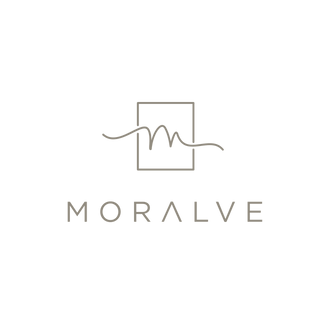

Leave a comment